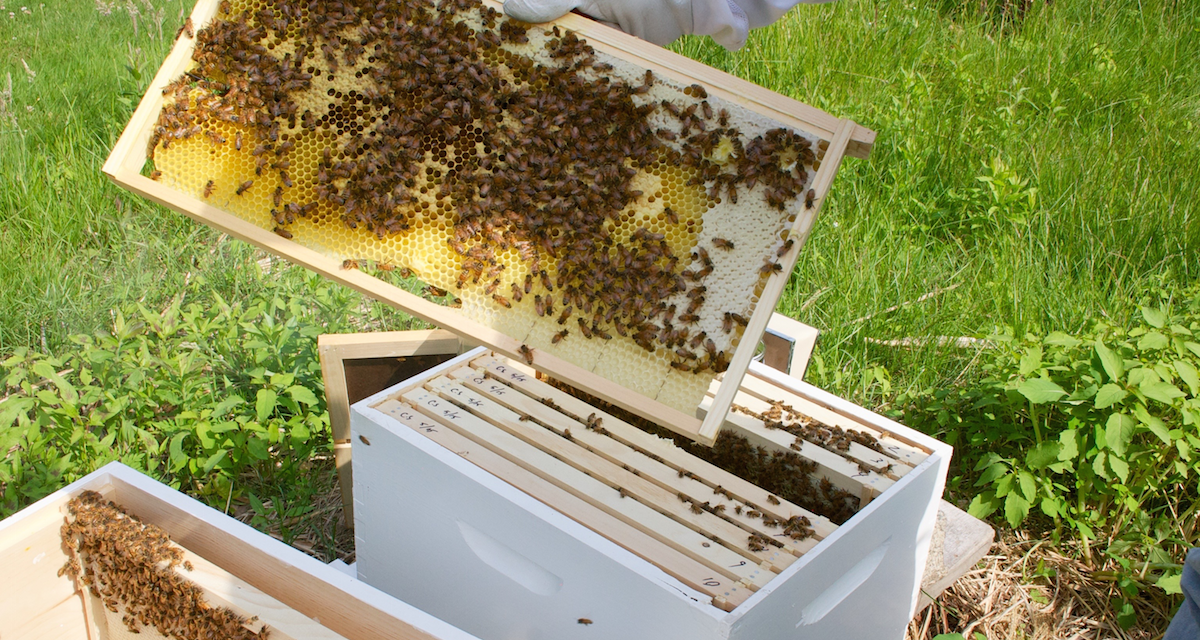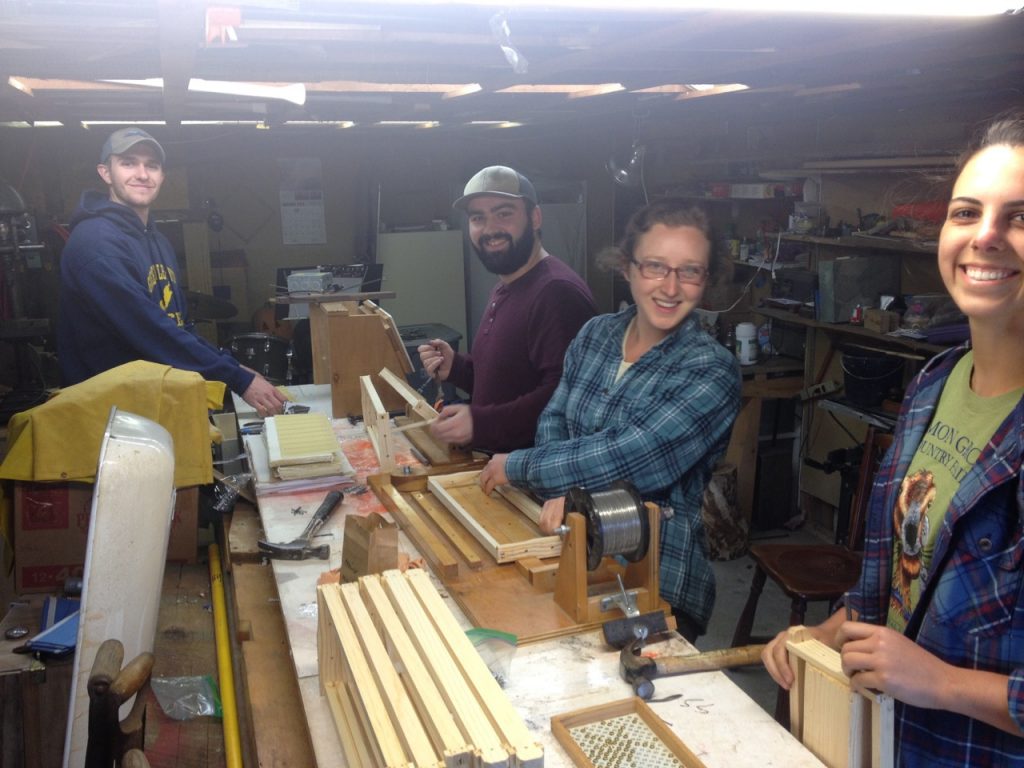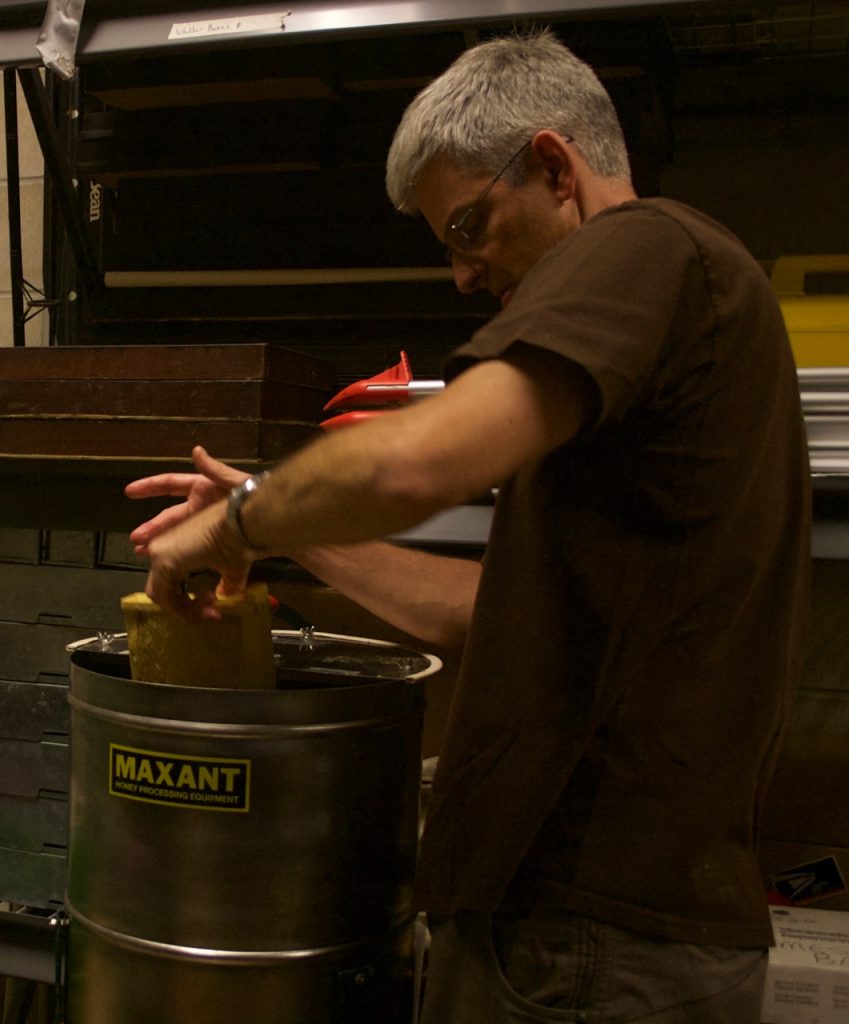The Biologist and the Beekeeper
For years, Dr. Craig Story (biology) listened to requests from students interested in having a bee hive to study apiculture, or beekeeping. The students wanted to use the hive to educate the community on campus and in the area about the ecological significance of honey bees and other pollinators, as well as the stresses they face. Last summer, Dr. Story took a course through the Essex County Beekeepers Association, and this year—for the first time—Gordon has its own bee hive and a new student club, the Gordon College Beekeeping Association (GCBA).
Biology major and GCBA co-founder Joey Taraborrelli ’17 (pictured below, second from left) says, “We saw this as an opportunity to add extra value to Gordon’s emphasis on sustainable practices and teach other interested students an exciting method of sustainability. Dr. Story has been a great mentor and guide, and we’re excited to see both the club and hive grow!”
The hive currently contains between 10,000 and 20,000 bees and is located in a large goldenrod patch behind the Barrington Center for the Arts, says GCBA director Joshua Spoonhour ’17 (pictured above, far left). “This location is strategic as it is relatively isolated from the main campus, while still being close enough to help pollinate the community garden maintained by Natalie Hyde, garden director for Advocates for a Sustainable Future.”
As for the curious wanderers, Dr. Story gives fair warning: “This time of year honey bees get defensive and are more likely to sting, so it is not recommended that people go over there.” He adds that plenty of signs are posted to avert anyone unintendedly happening upon the hive. But, says Spoonhour, “We have many spare bee suits and would love the opportunity to educate you in how to safely interact with the hive!”
During peak honey flow, the hive is capable of producing 10 frames (approximately 30 to 35 pounds) of honey in a week. “Harvesting this honey typically takes place in late summer through early fall,” explains Spoonhour. “Once the frames full of honey are removed from the hive, they are then free of bees and we are able to uncap and ‘spin’ the honey out of the comb indoors, where we can control the environment more closely.”
So far the club’s half-dozen student members have harvested more than 35 pounds of honey, which is a “light to extra-light amber color, and is composed of many sweet wildflower undertones,” says Spoonhour. The fruits of their (and the bees’) labor will soon be for sale, with proceeds to offset the costs and support the goals of the GCBA.
 The Bell
The Bell

